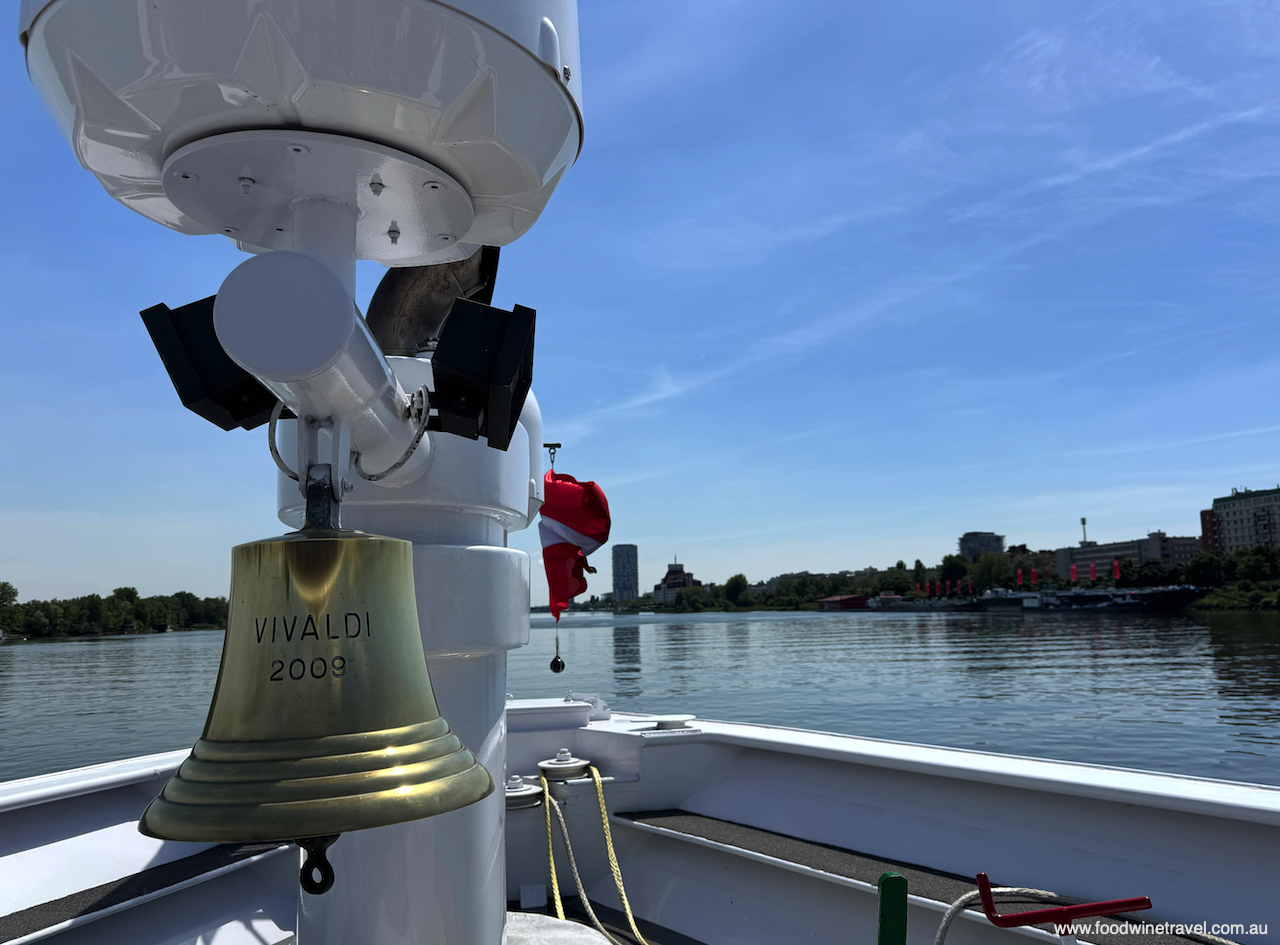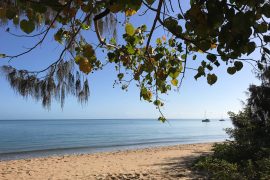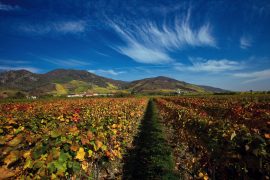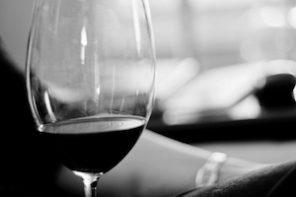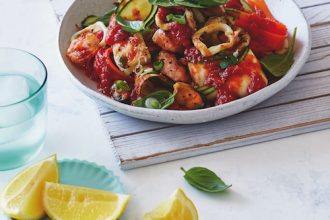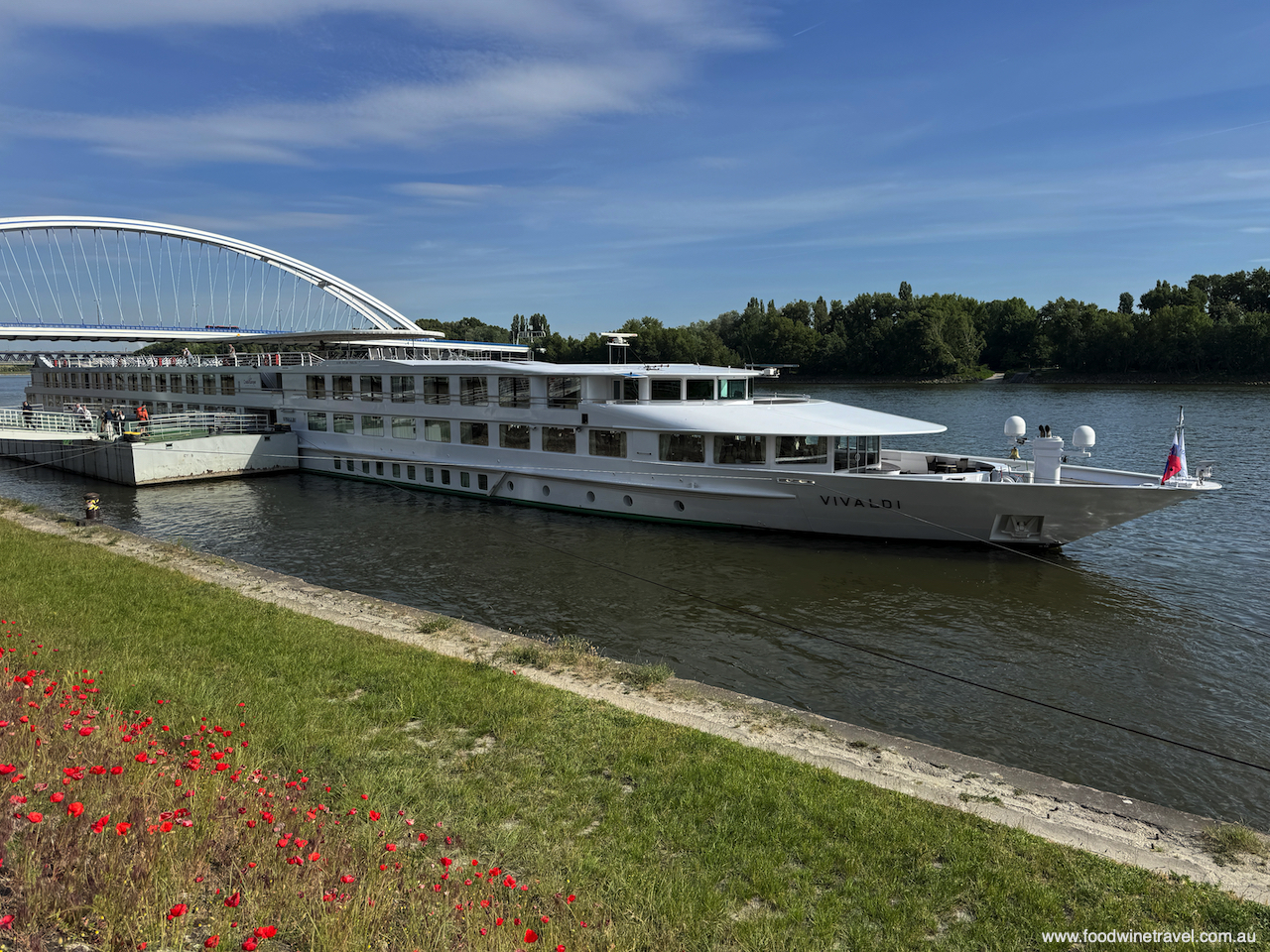
Around 150 years before Leonardo da Vinci painted The Last Supper, monks painted a fresco in a similar vein on the ceiling of a tiny chapel carved out of solid rock high on a mountain in north-eastern Bulgaria.
Still vivid in colour and remarkable in their style and execution, the frescoes on the walls and ceiling of the Holy Mother of God Church were inscribed on the UNESCO World Heritage list in 1979.
I knew about the rock churches at Meteora in Greece and Goreme National Park in Turkey but knew little about this Bulgarian treasure before the excursion on day 8 of a Danube River cruise with CroisiEurope.
Starting in Vienna and sailing all the way to the Black Sea, the 11-night cruise was a soft introduction to a part of Europe that I had long wanted to visit.
What is CroisiEurope?
Many Aussies likely have not heard of CroisiEurope but the French family-owned company is widely known in Europe for its modestly priced fares and all-inclusive onboard experience. This extends to a good selection of cocktails, wines and soft drinks at no extra charge.
Croisi is also known for its huge range of river, canal and coastal cruises. Not only does it have 50 ships operating in Europe – covering pretty much every waterway you might consider – it also operates in Egypt, southern Africa and the Mekong. You can read our earlier story on Croisi’s Mekong River cruise in Vietnam and Cambodia here.
The company offers family cruises in some destinations, allowing children to travel at a discounted rate or even for free. But it’s fair to say that Croisi has a largely older clientele (the same can be said of European cruising in general).
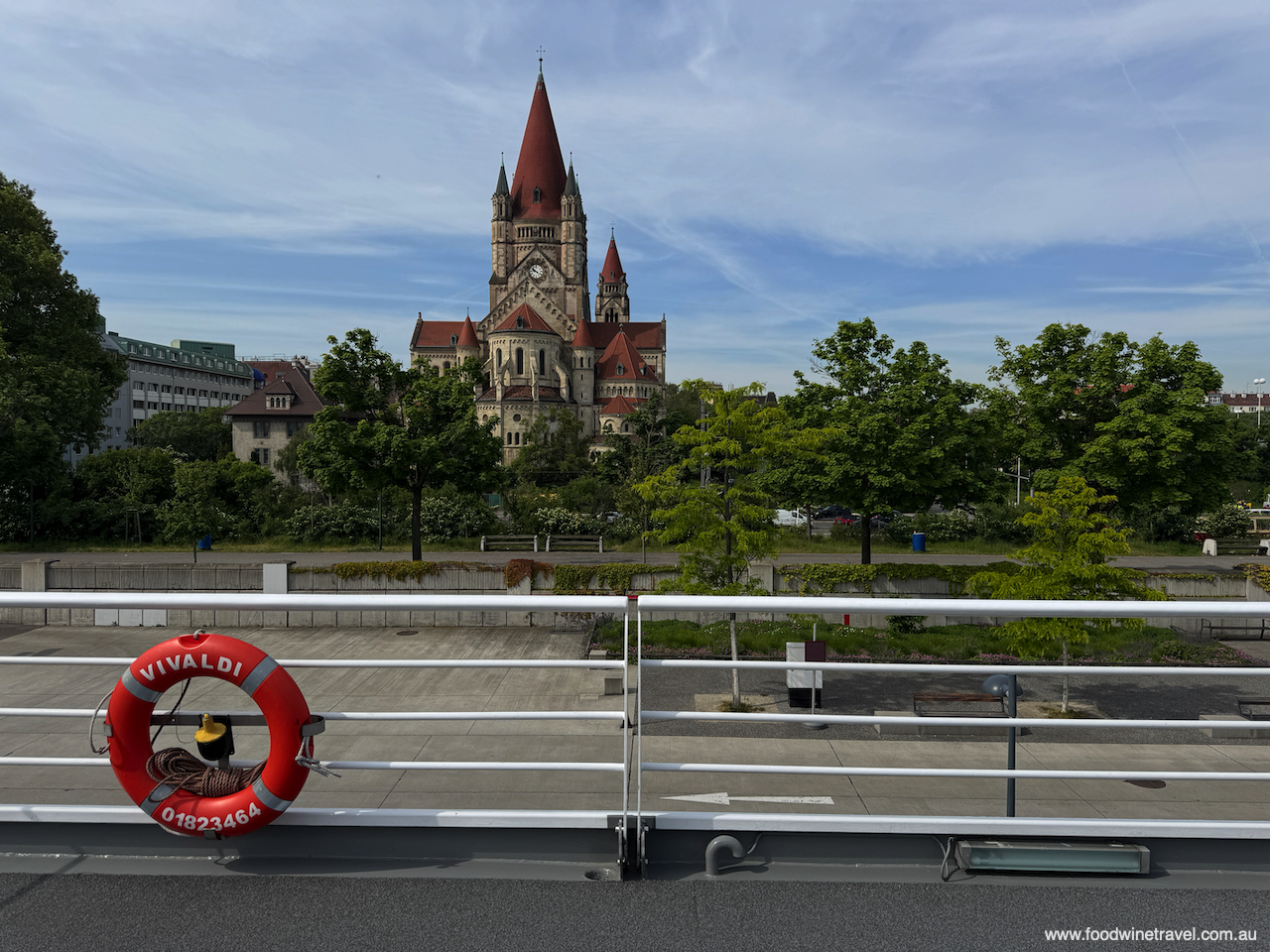
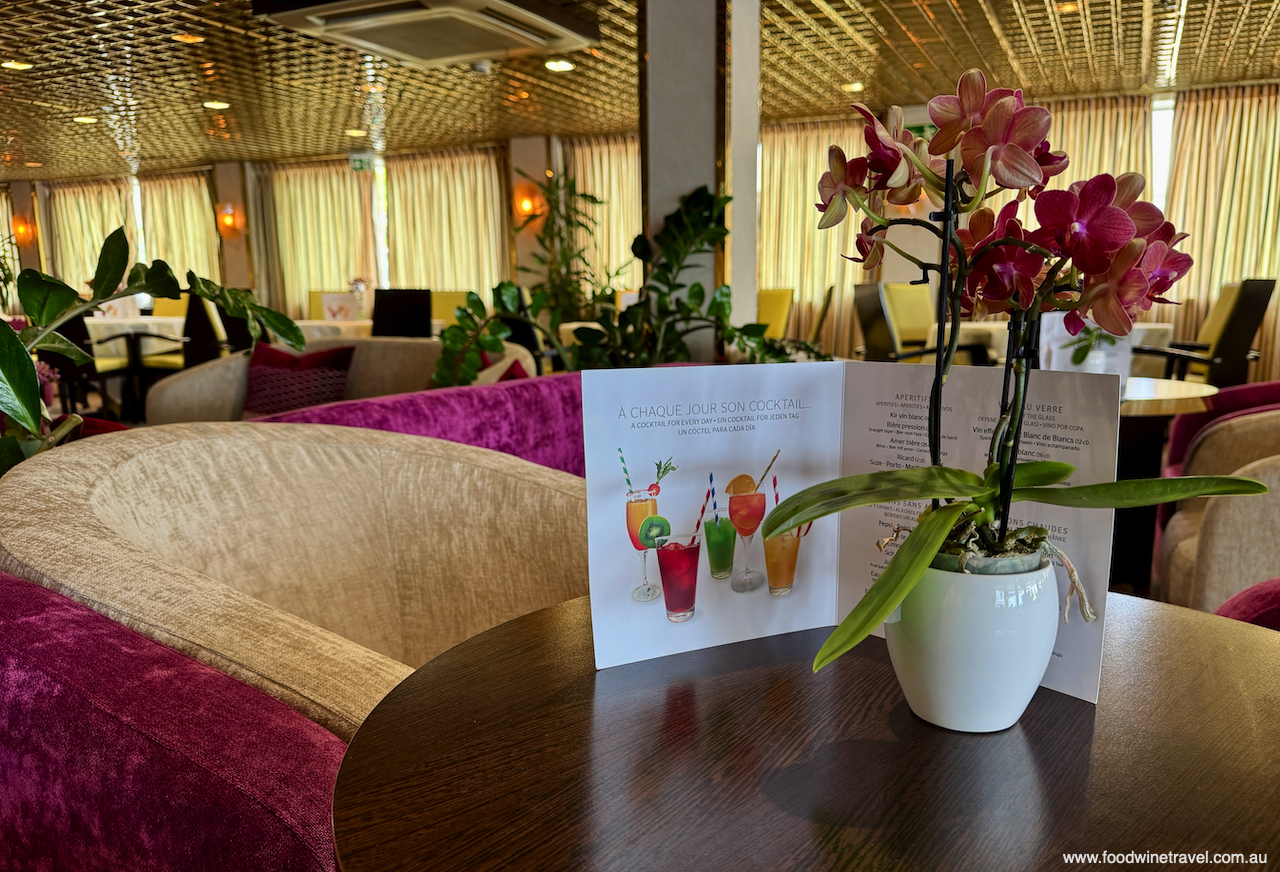
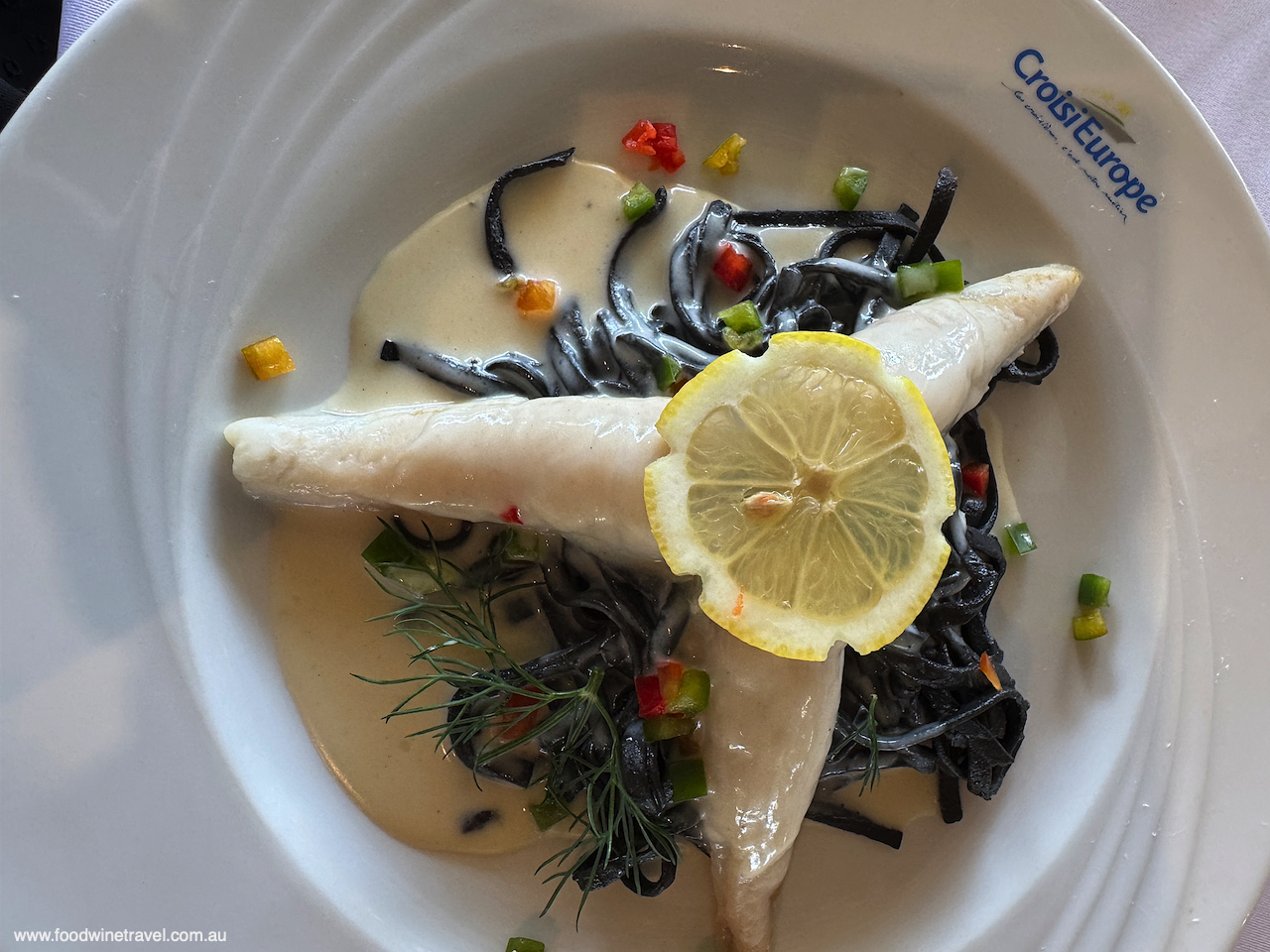
Worth noting is that some cruises are available without a single supplement, making them attractive for solo travellers. And that was me on this trip, travelling solo, paired for mealtimes with the only other native English speakers on board the MS Vivaldi.
Colin and Brenda, English-born but resident in Belgium for more than 50 years, were a delight to be with and we formed a tight little unit amongst the 180 or so French- and Spanish-speaking passengers. All onboard commentary and excursions were offered in French, Spanish and English, with passengers hailing from various South American countries, Canada and Europe.
Multi-lingual crew
The multi-lingual crew switched effortlessly from one language to another. The fact that there were so many French and Spanish speakers on board, coupled with the predominantly French/European food and wine, lent a vibe that was very different from previous river cruises I have done in Europe. It seemed fitting to experience the continent this way, rather than with a mainly Australian or American clientele. Just don’t expect the crew to know how Aussies like their coffee (although they are very obliging and will do their best to accommodate your preferences).
Boarding in Vienna was seamless, and within minutes I was settled in my upper deck cabin with its large panorama window letting in plenty of fresh air. The spacious room had twin beds pushed together, a small desk and chair, wardrobe with small safe, and compact ensuite bathroom. The décor was classic with a bright splash of colour from a painting of sunflowers above the bedhead.
My room was just a few doors along from a lounge at the rear of the ship – not the main lounge, which was at the front of the ship on the level below, but a quieter space where I enjoyed spending time when we weren’t on excursions. The itinerary offered a pleasing mix of excursions and time on board.

Why cruise the Danube?
While the Danube in central/eastern Europe doesn’t have the spectacular appeal of the Rhine in the west, it does have the picturesque ‘Iron Gates’, a long stretch of steep limestone cliffs and narrow gorges forming the boundary between Serbia and Romania.
Croisi’s Vienna to Oltenita cruise sails the Danube-Black Sea Canal, an engineering feat and the third longest canal in the world after the Suez and Panama canals. In total, the cruise (which is also offered in reverse) travels 1609 kilometres from Austria to Romania, navigating six locks along the way — one such a tight squeeze the MS Vivaldi literally touched the sides.
There’s a feeling of excitement once the Black Sea is reached, especially knowing that Ukraine is just a little further along the seashore, yet here we are in peaceful waters, heading off to explore the vibrant seaside town of Constanta and taste fine Romanian wine.
The excursions attract an extra charge, albeit at prices that are quite reasonable even for Aussies with our punishing exchange rate. All on-board experiences are included in the fare, including a couple of evenings of folk dancing in Bulgaria and Romania, and knowledgeable folk brought on board to provide destination insights.
While docked in Bulgaria, a local university lecturer did the presentations, and as there were only three of us English speakers, we had an opportunity to ask her as many questions as we wanted to, about everything from what life was like during the Communist regime, to why roses are the symbol of Bulgaria (the Damask rose has been cultivated for centuries; its oil is prized by perfumers).
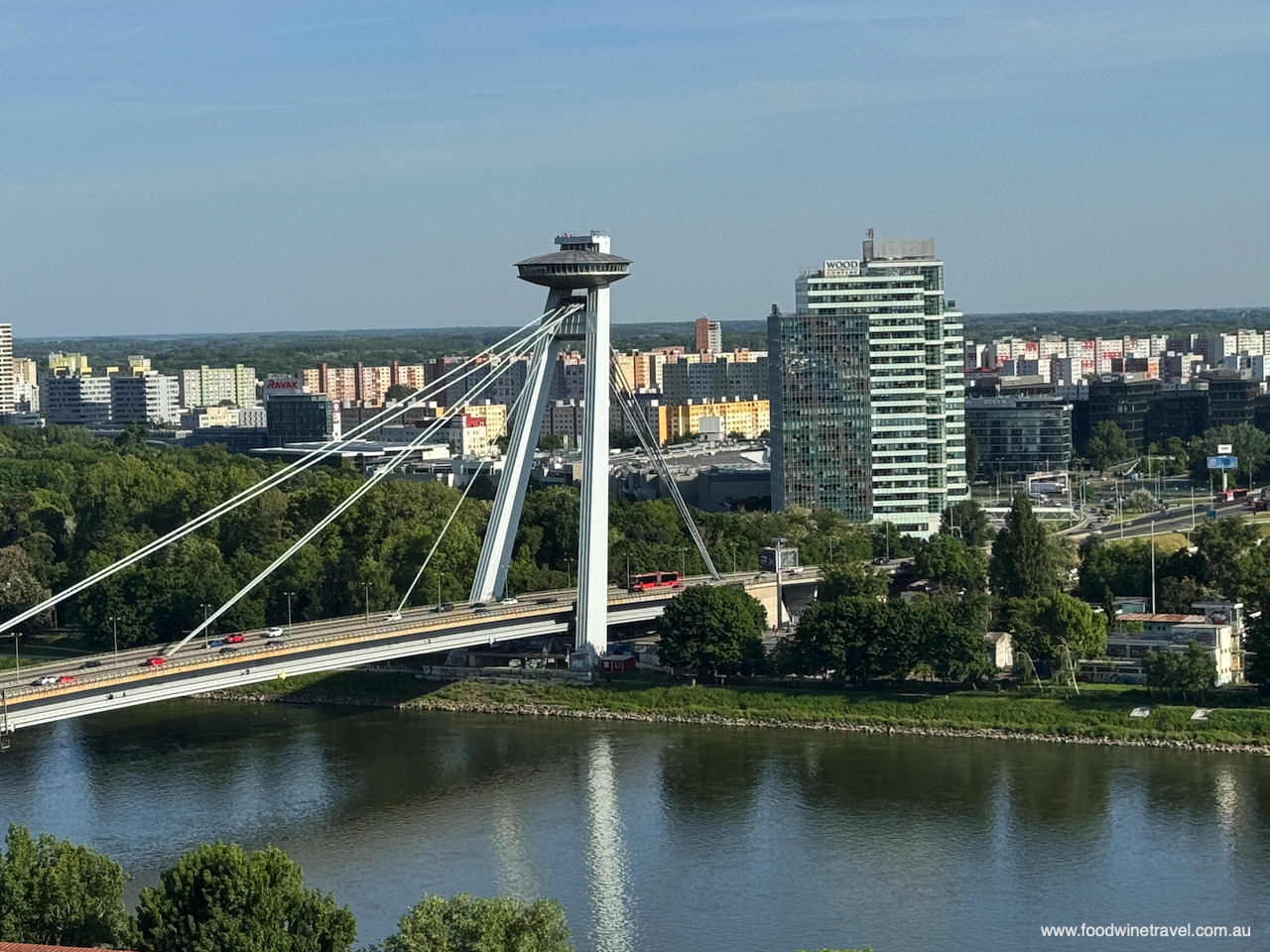
But getting back to the beginning … The ship remained docked in Vienna on the first night, with an opportunity for an evening concert and sightseeing the following morning. By early afternoon on day 2, we were on our way to Bratislava, sailing through the first lock within half an hour of departure.
After viewing the Slovakian capital from its hilltop castle, we did a walking tour through the Old Town with its lovely old buildings, including some Art Nouveau beauties. Never have I seen so many icecream shops in one small area as I saw in Bratislava, some quirky, some elegant, all of them very tempting.
Also a delight were the many statues, some of them quite amusing, like the council worker with his head popping out from under a manhole cover, a nearby roadside sign declaring “Man at work” (apparently because so many people stopped to rub his head). Passing the landmark UFO bridge over the Danube, viewed in Communist times as the gateway to the west, we returned to the ship for a night-time cruise to Budapest.
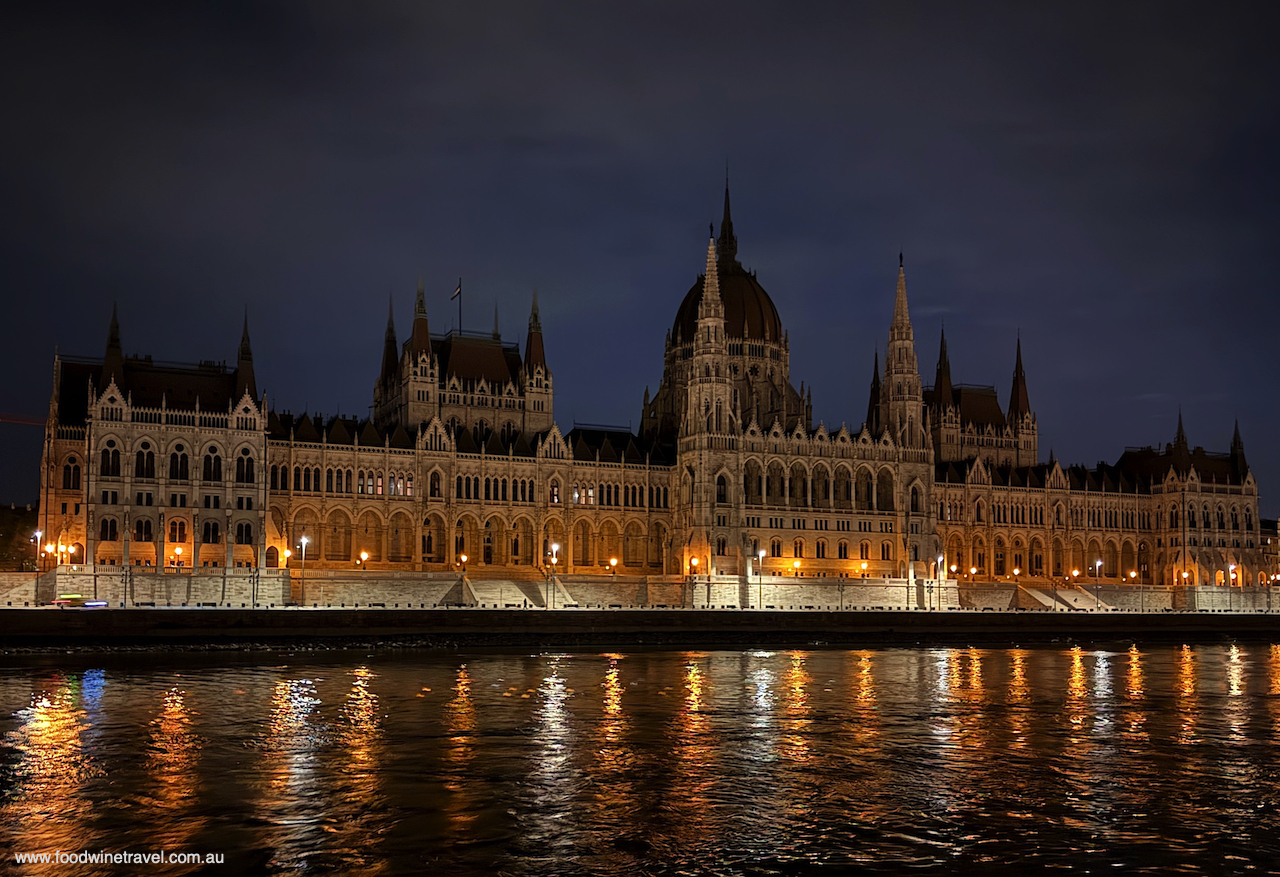
Exploring the Hungarian capital on day 3 was easy since the ship docks right in the centre, near the Elisabeth Bridge, 10 minutes’ walk from the Market Hall which I have visited previously and never tire of. Nor can I tire of viewing Budapest by night. Sailing away at midnight, the parliamentary and other buildings lining the riverbank looked enchanting in the still of the night, their lights casting a gentle glow over the river. It was the third time I’d visited Budapest but from here on in it was all new territory for me. So exciting!
UNESCO World Heritage
Day 4 gave me the opportunity to add another UNESCO World Heritage site to the list of those I have visited. The Puszta — otherwise known as the Great Plain of Hungary – makes up half the country and is a bit like what you might imagine North America’s 19th century Wild West to have been like, with cowboys watching over huge cattle herds grazing on vast, flat grasslands.
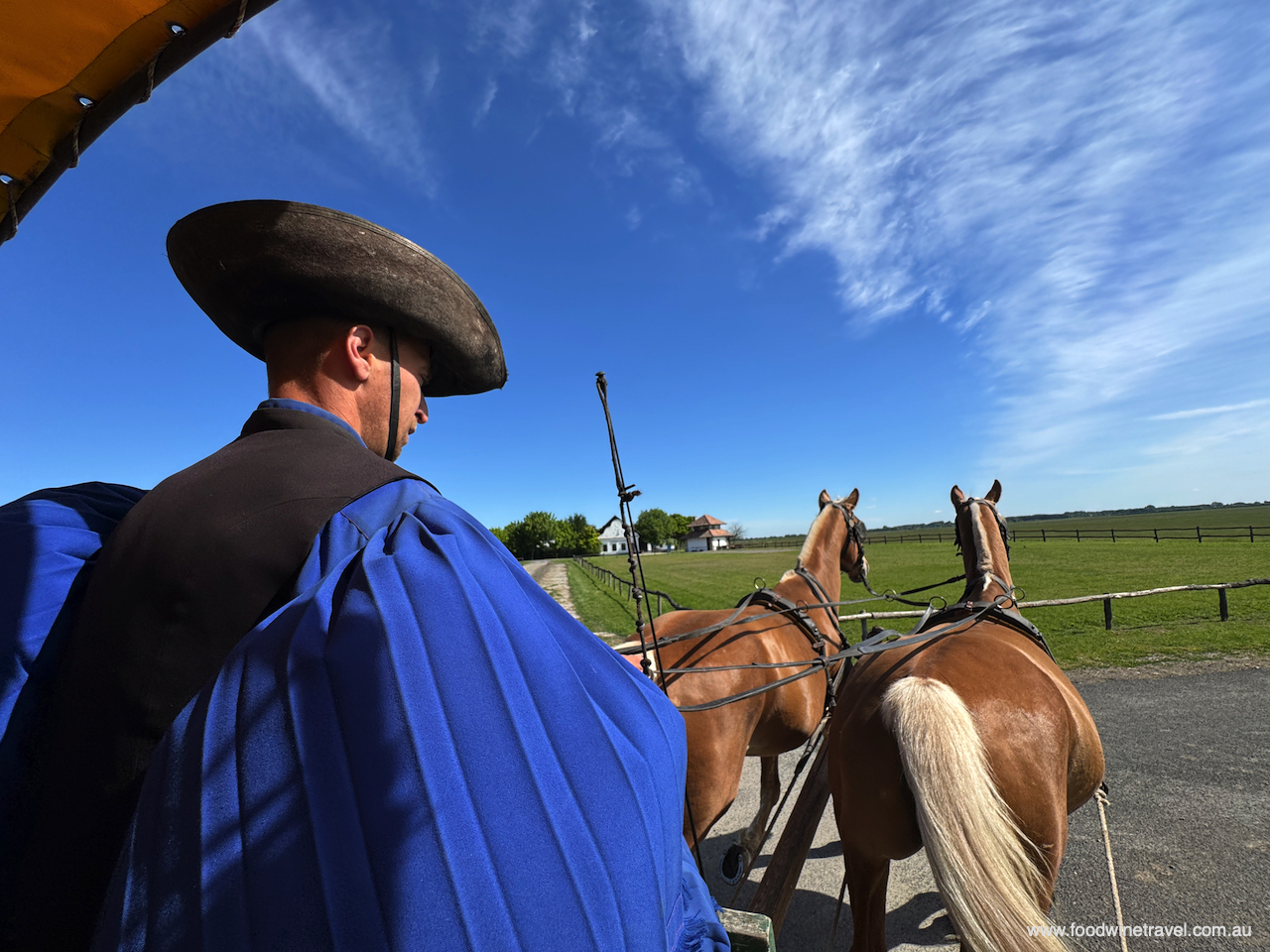
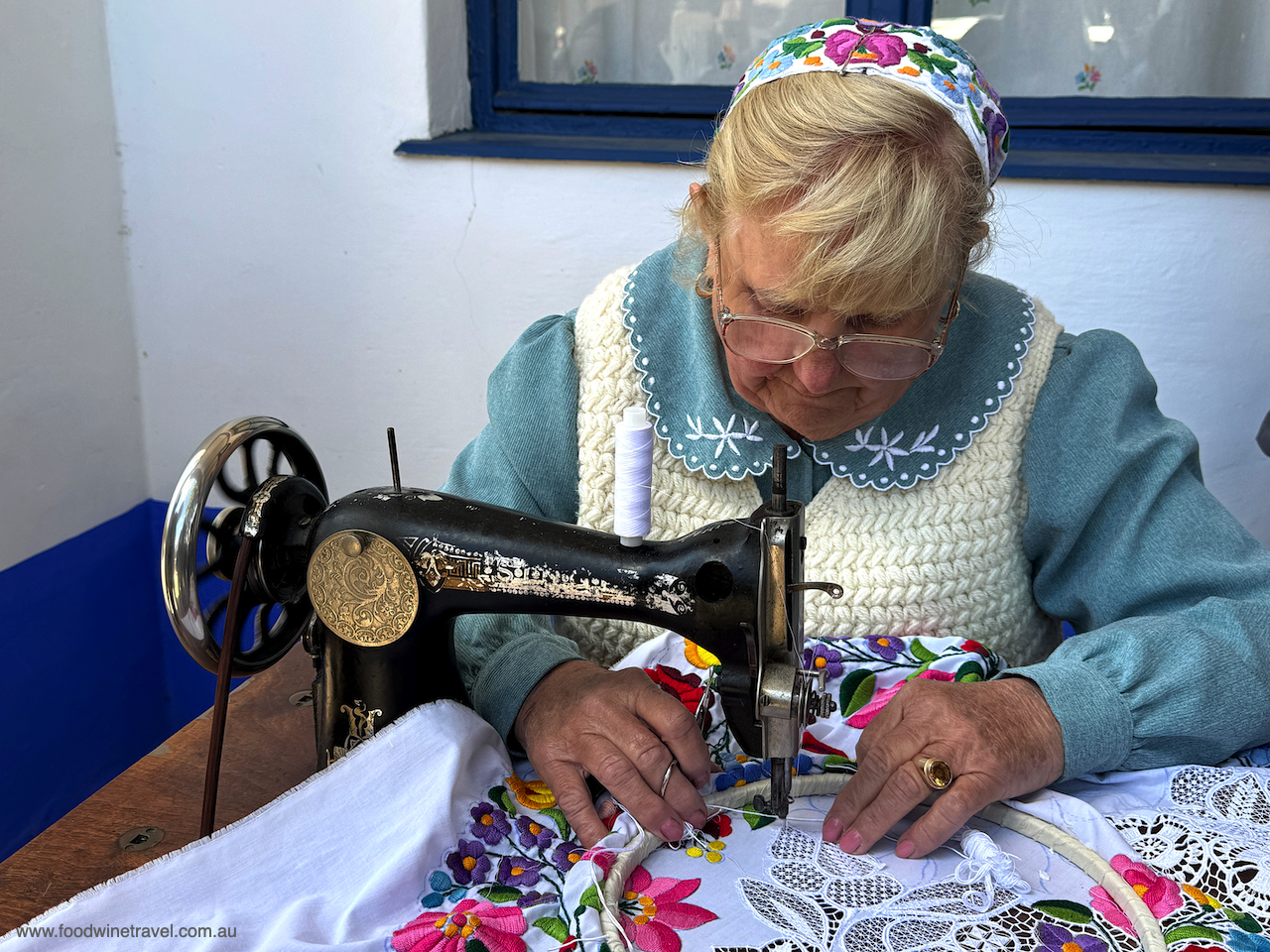
Even though the Bakod Horse Farm, at the heart of the Puszta, is a well-oiled tourist operation, it feels like being invited to a local equestrian show, as the passengers from our small cruise ship were the only audience and we were welcomed with traditional palinka (plum brandy) and pogacsa (small savory buns).
The csikós, herdsmen wearing traditional blue canvas attire, demonstrate an incredible harmony with their horses and Hungarian Grey cattle, the latter a special breed with long, curved horns. The breed almost became extinct in the early 20th century.
The csikós perform some amazing acrobatics and games of skill while astride their horses, and there was one cheeky donkey for extra entertainment. There was even an opportunity to ride aboard a charabanc, a traditional horse-drawn carriage with wooden benches, just as people would have done since time immemorial.
This region is renowned for its paprika, or “red gold’, and there was time to visit a fascinating paprika museum on the farm before heading into the atmospheric little town of Kalocsa to visit a 200-year-old house which shows the old way of life and the colourful folk art that brightened their homes and clothing.


“I never thought the silence could be so loud,” said our guide Melicia on day 5 as she recalled the 16 minutes of silence held to remember the 16 people killed when a railway station canopy collapsed in Novi Sad, Serbia’s second biggest city.
Blessed with baroque beauty and people enjoying the spring sunshine, Novi Sad is a vibrant city but it’s clear the pain runs deep, with the railway station tragedy spawning mass protests about government corruption, along with quiet and not-so-quiet reflection in Freedom Square and other public spaces.
Melicia, who joined us on board the ship for the afternoon cruise to Belgrade, is a fount of knowledge about Serbian history, and freely shared her views and insights in response to our many questions. There was welcome light relief in an evening excursion to a local tourism college with a wonderful presentation of traditional folk dancing and music, followed by a brief walk through Belgrade’s bohemian Skadarlija quarter.
It was pumping with night life, as was the quay when we arrived back at the ship, where the waterfront is lined with former warehouses now filled with busy bars and restaurants. As the ship docks overnight, there is more time to explore Belgrade on the morning of day 6, when a walking tour took us through beautiful Kalemegan Park to the historic fortress overlooking the confluence of the Danube and Sava Rivers.
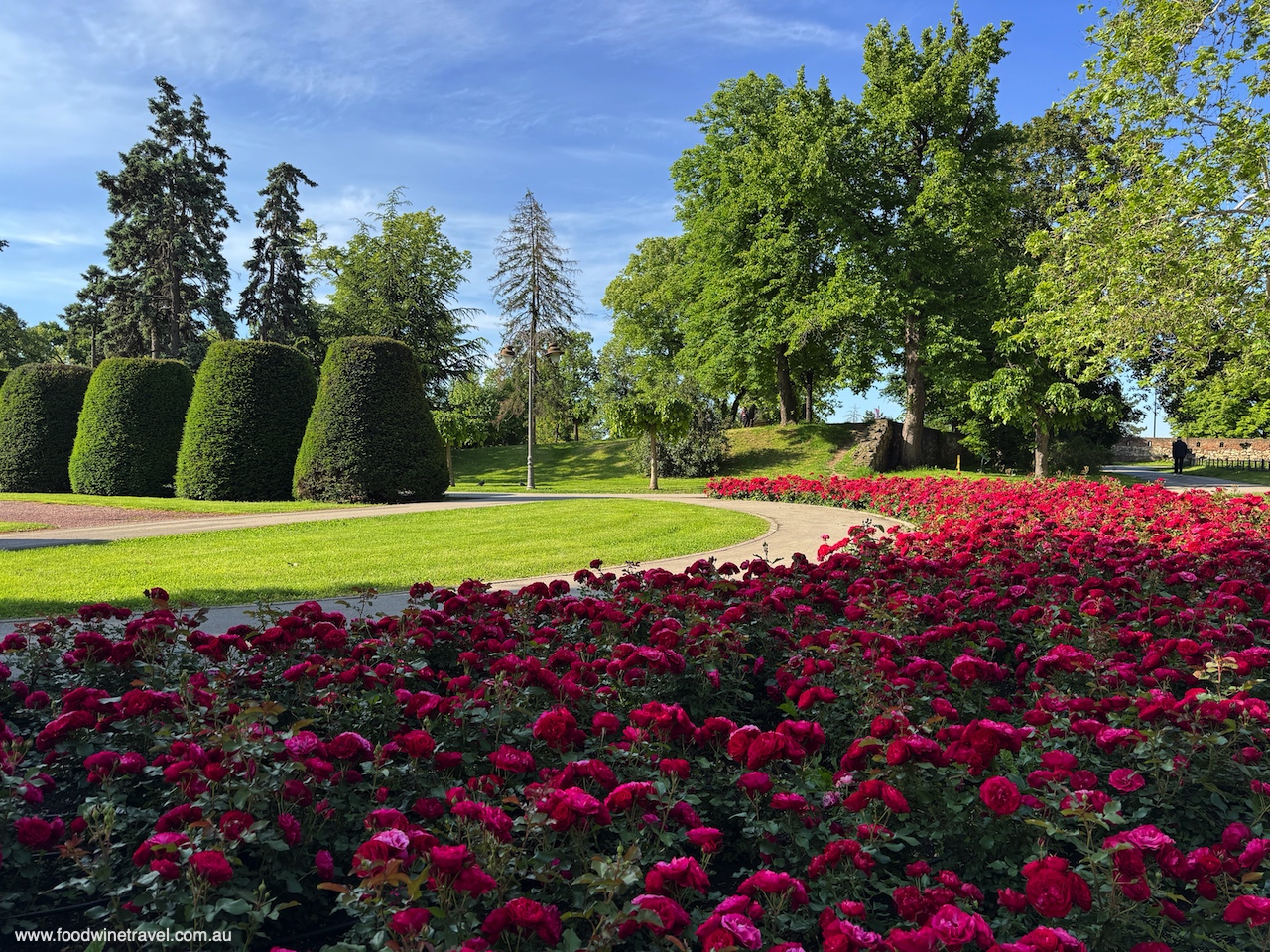
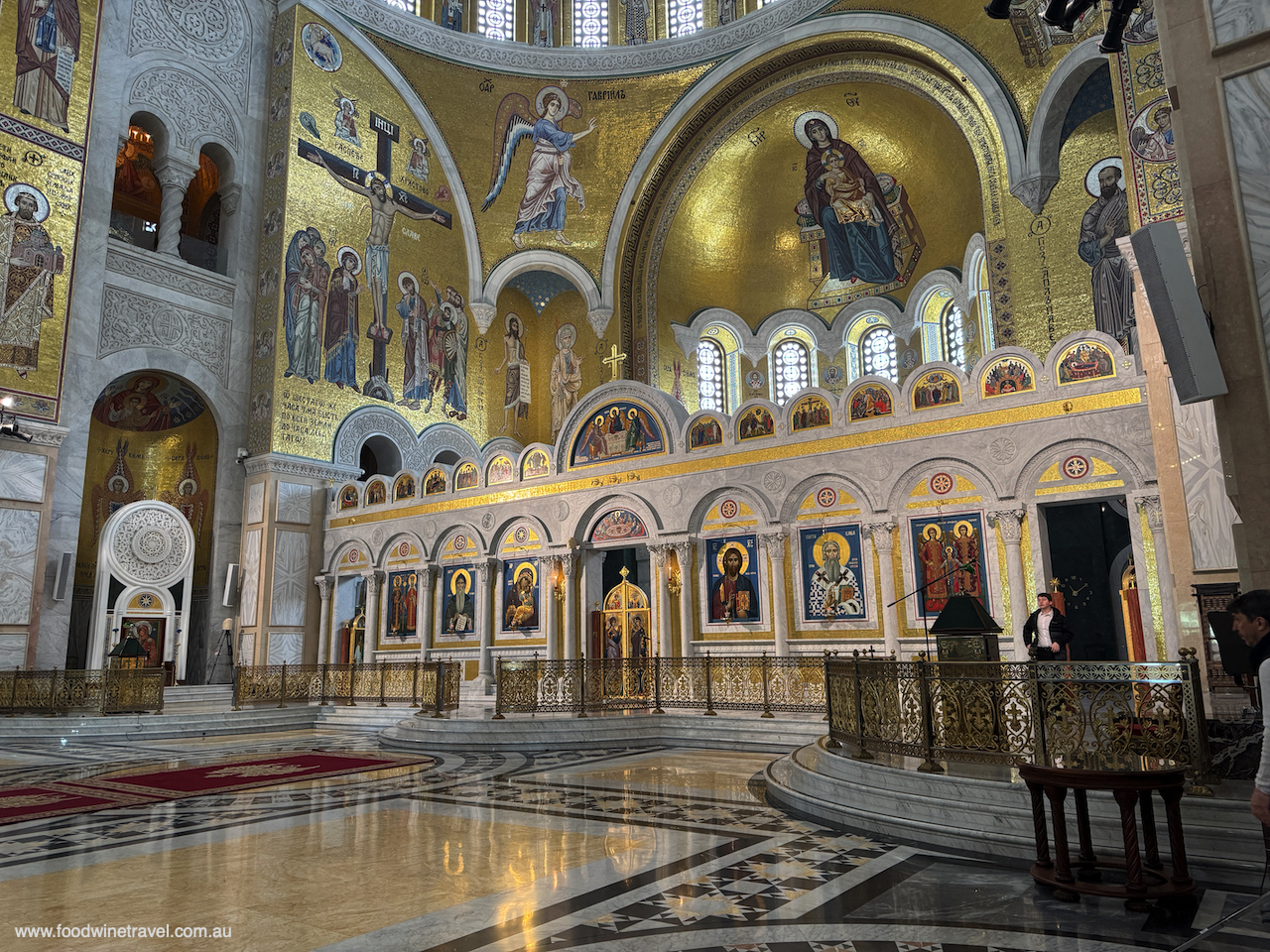
There is also a long stop at Belgrade’s Saint Sava Church, an impressive building that was long in the making but completed only in 2021. Dedicated to Saint Sava, founder of the Serbian Orthodox Church, it’s the jewel of the city, breathtaking both in scale and craftsmanship, and a source of great pride for locals.
Day 7 is a rest day on board the ship and there was excitement in the air as we approached the ‘Iron Gates’. The steep cliffs, calm waters and serenity really are quite magical, especially when the giant rock carving of King Decebal comes into view. Created in the late 1990s, it’s a nod to the last Dacian king (87 to 106 AD) who fought against the Romans for independence.
Iron Gates I and II
Once quite treacherous for boats, navigation of the Danube improved with the construction of a system of locks and dams, Iron Gates I and II, completed in 1972 and 1985 respectively. All the way along the river, on both sides – Serbia to the south and Romania to the north — people fish from runabouts and enjoy the river from little cabins and caravans.
At one particularly narrow point of the river, Roman Emperor Trajan ordered a bridge be built across, allowing for the final conquest of Dacia, the ancient name for what is now Romania. Although raised from its original location when the river was dammed, the 2,000-year-old Tabula Traiana, a stone engraved to mark the Roman road, can still be seen – just. (Thanks, Apple, for my iPhone zoom.)
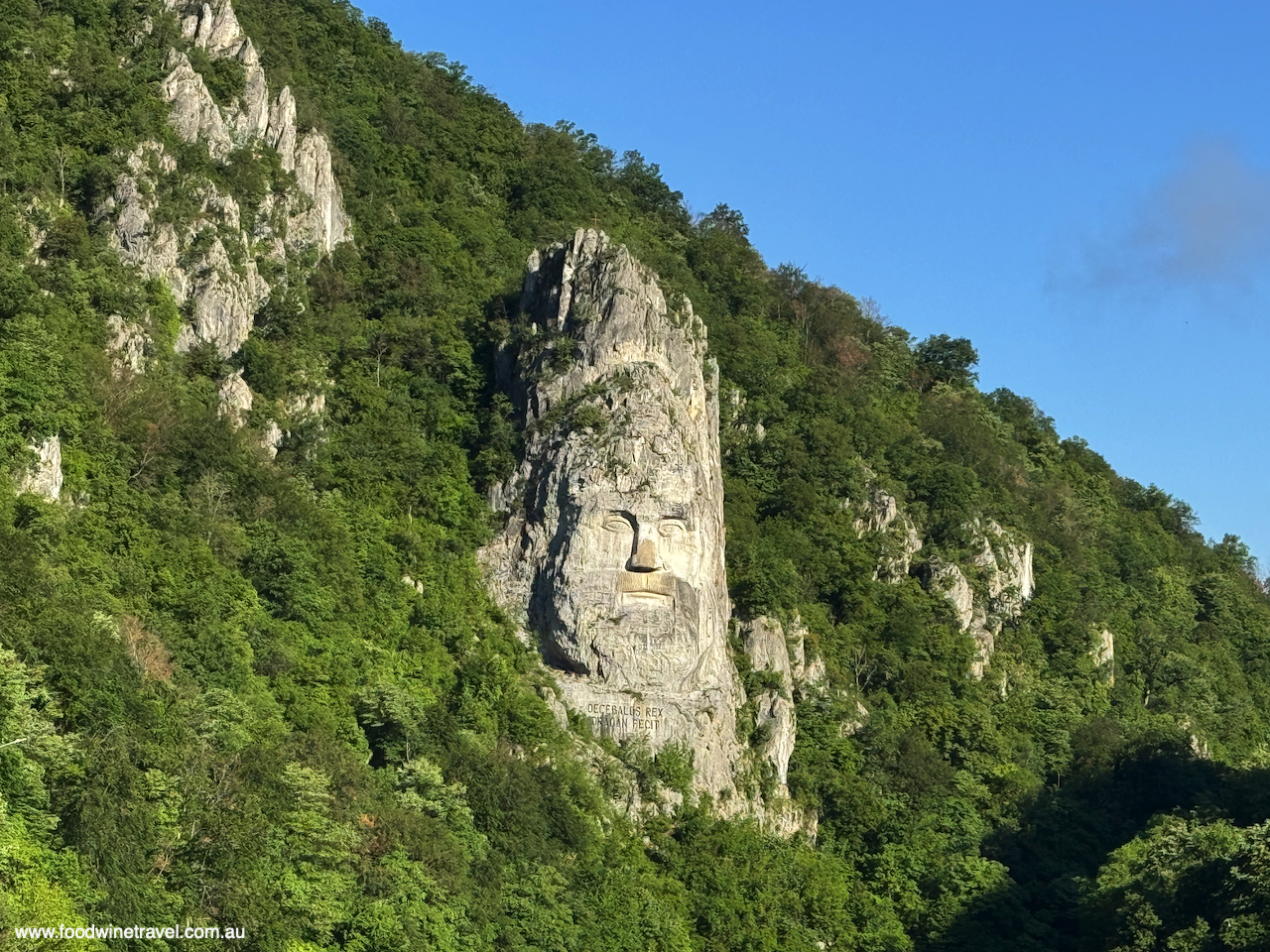
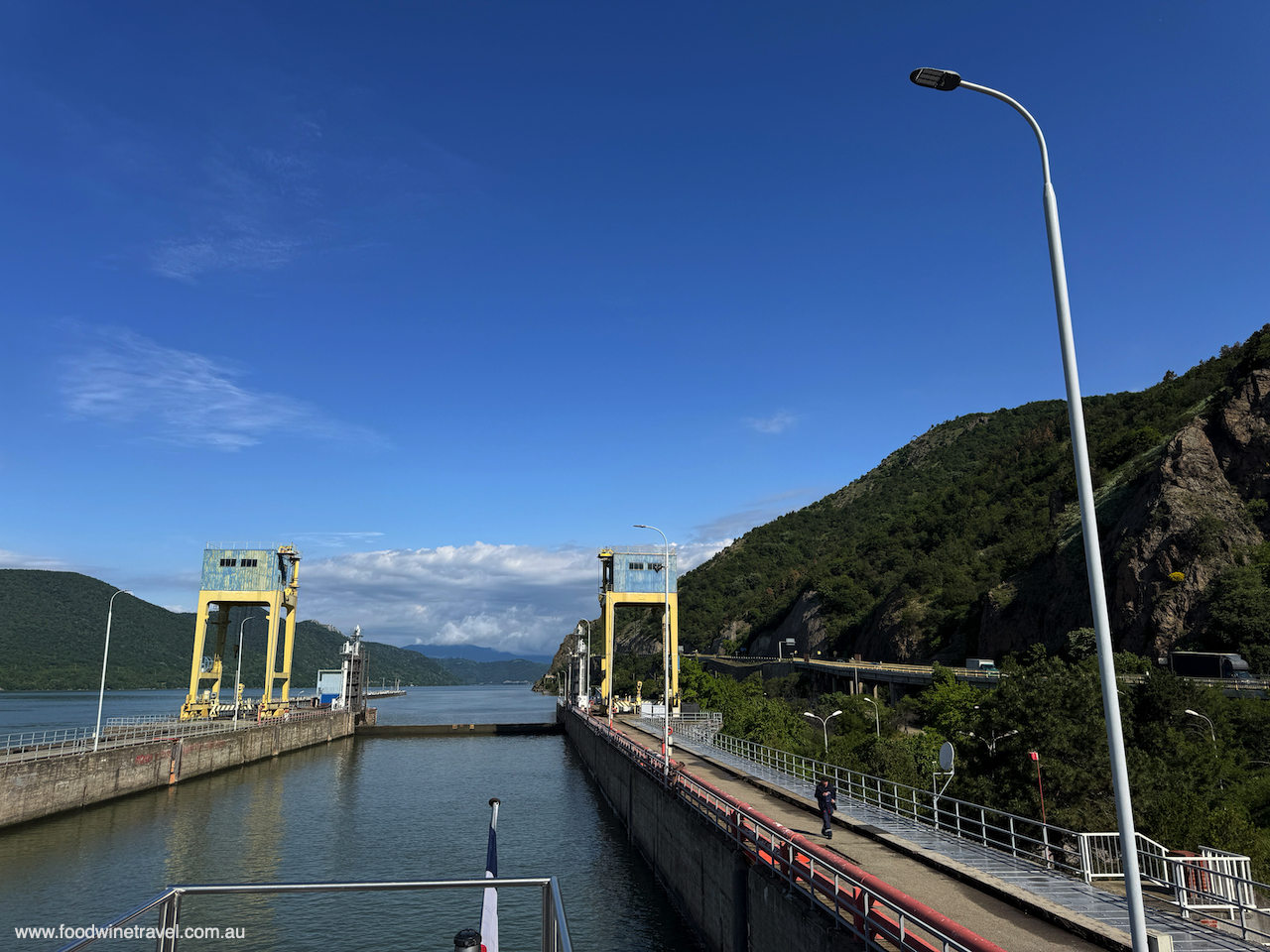
As the landscape gave way to woodland and planted forests, we said goodbye to Serbia and hello to Bulgaria, where on day 8 we saw the rock church and frescoes (mentioned in my intro), combined with a visit to ruins of the medieval fortified town of Cherven.
The value of a great tour guide
Most of the guides on the Croisi excursions were very good but our guide here, Theodora, was pure gold. Having worked as far afield as the United States and Panama, she was passionate about her hometown of Ruse, which she introduced us to in an afternoon excursion on day 8.
Founded by the Romans, Ruse was the most important town on the Danube during Ottoman times. Today, it’s a modestly sized Bulgarian city with a mix of Communist era blight and elegant 19th century buildings and parks.
Although its ‘little Vienna’ nickname overstates its beauty, it does have many fin de siècle buildings and a thriving cultural scene with a flourishing opera house and numerous music festivals and theatre productions. It was a great surprise to see not just one, but two, posters for local productions of Prima Facie, written by Australian playwright Suzie Miller.
Having gauged my interest in food, the lovely Theodora delighted in pointing out wild herbs and telling me about local traditions, like her grandmother storing barley in a large ceramic barrel under the ground, smoking meat for consumption throughout the year, and making feta and yoghurt which is highly regarded for its unique bacterial strains.
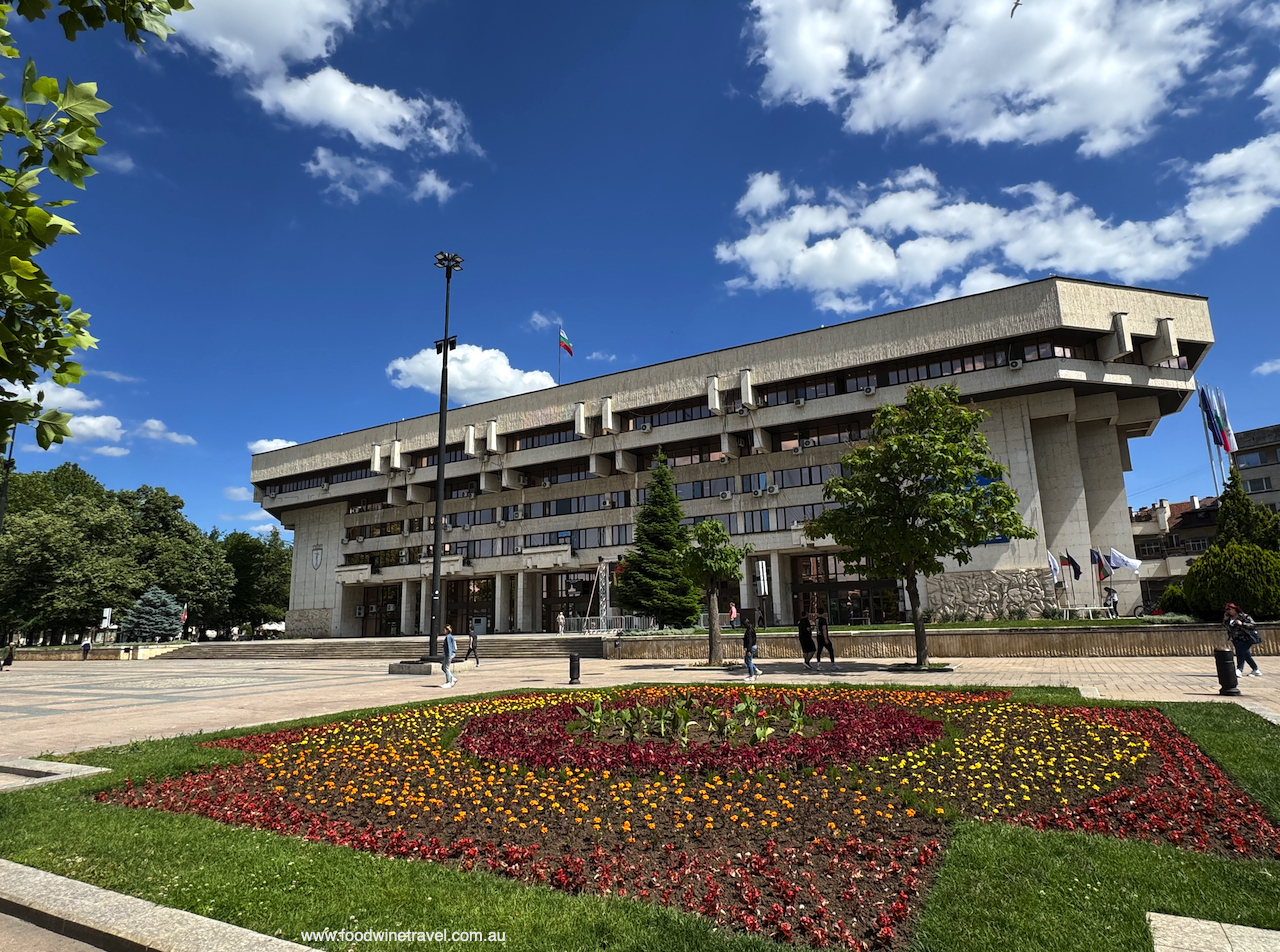
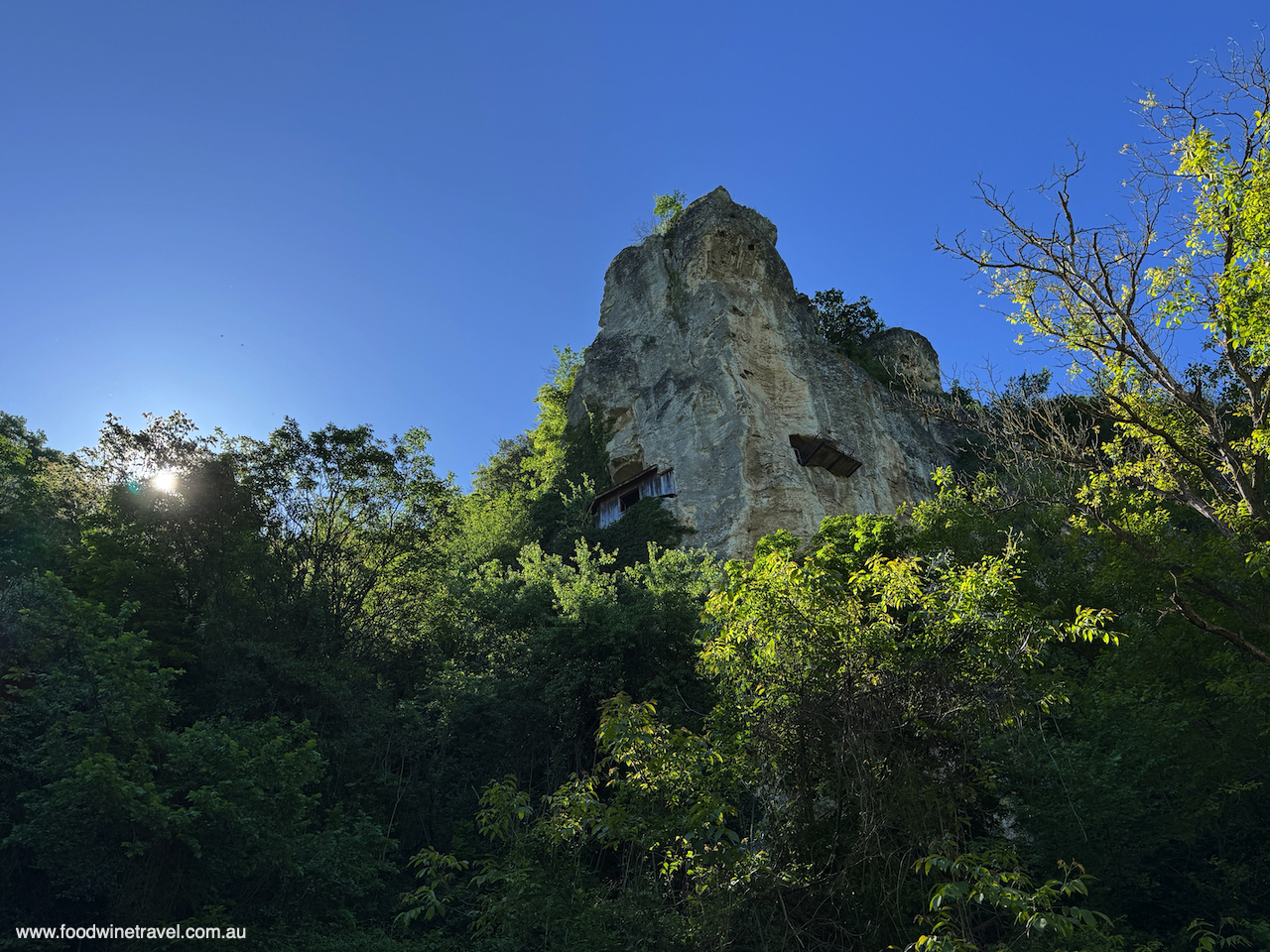
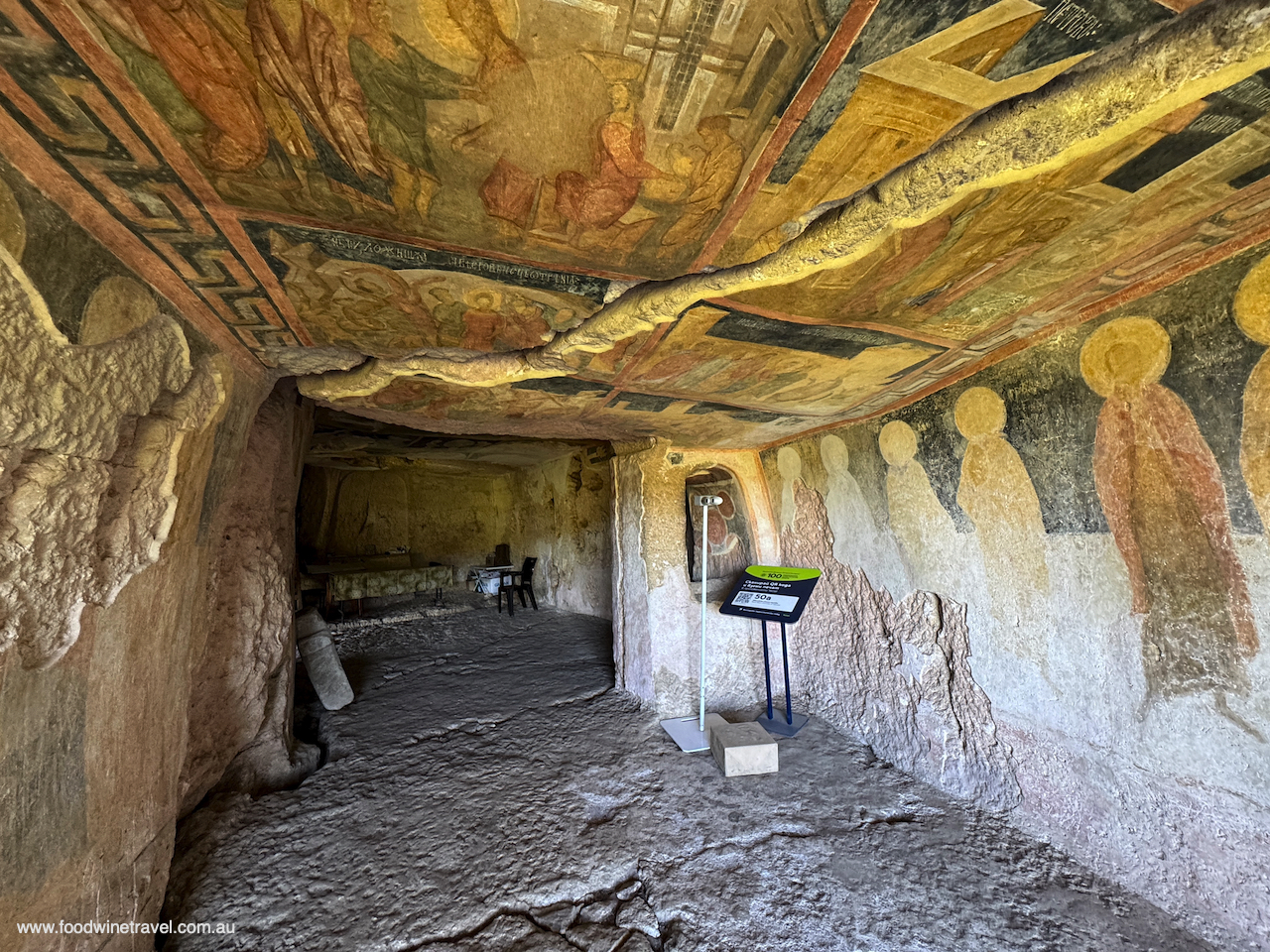
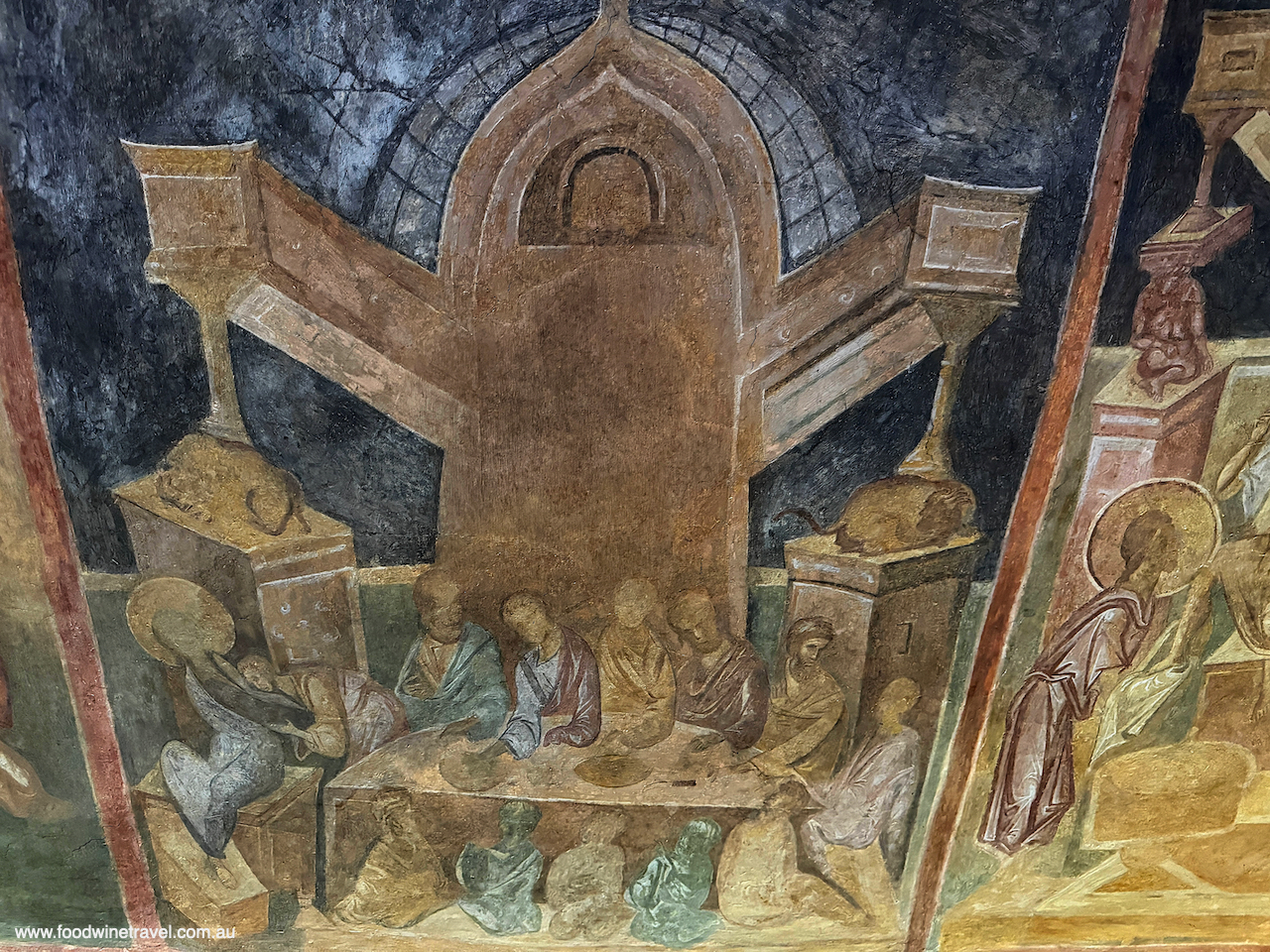
The Romanian capital of Bucharest is quite some distance from the Danube so the ship dropped us at one point on the Danube and picked us up further along the river after a day-long excursion on day 9.
After a pleasant amble around an open-air ethnographic museum, there was a drive around the city and a photo stop at the Palace of Parliament. The folly of Communist dictator, Nicolae Ceaușescu, must be seen to be believed. Housing 440 offices and 30 ballrooms, no less, it is the world’s largest administrative building for civil use, according to the Guinness Book of World Records.
Long fascinated by the Romanian Revolution and the way Ceaușescu and his wife Elena were quickly dispatched after the downfall of the Communist regime, I took ghoulish interest in seeing the balcony in Revolution Square where Nicolae Ceaușescu delivered his last speech before being executed.
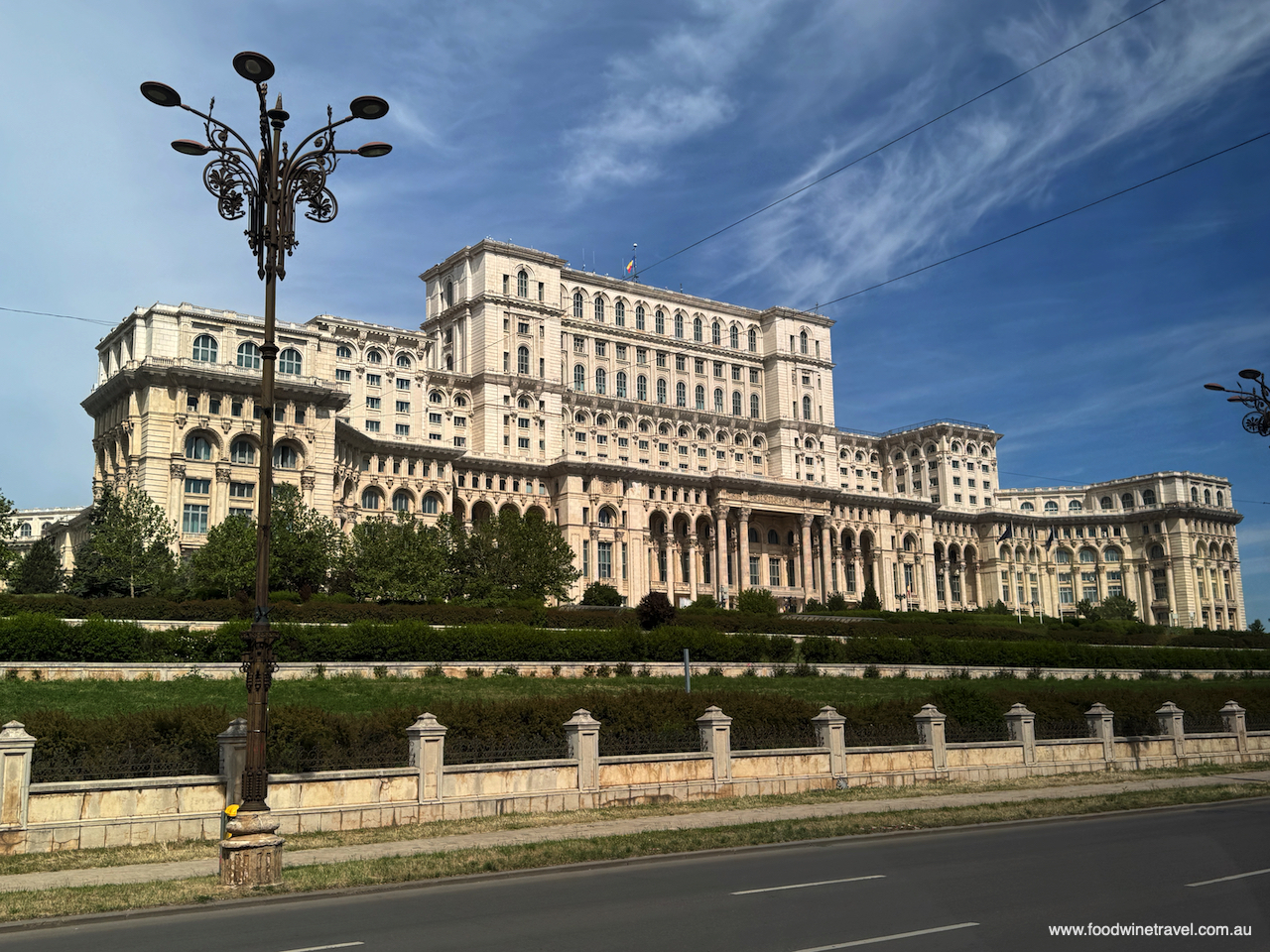
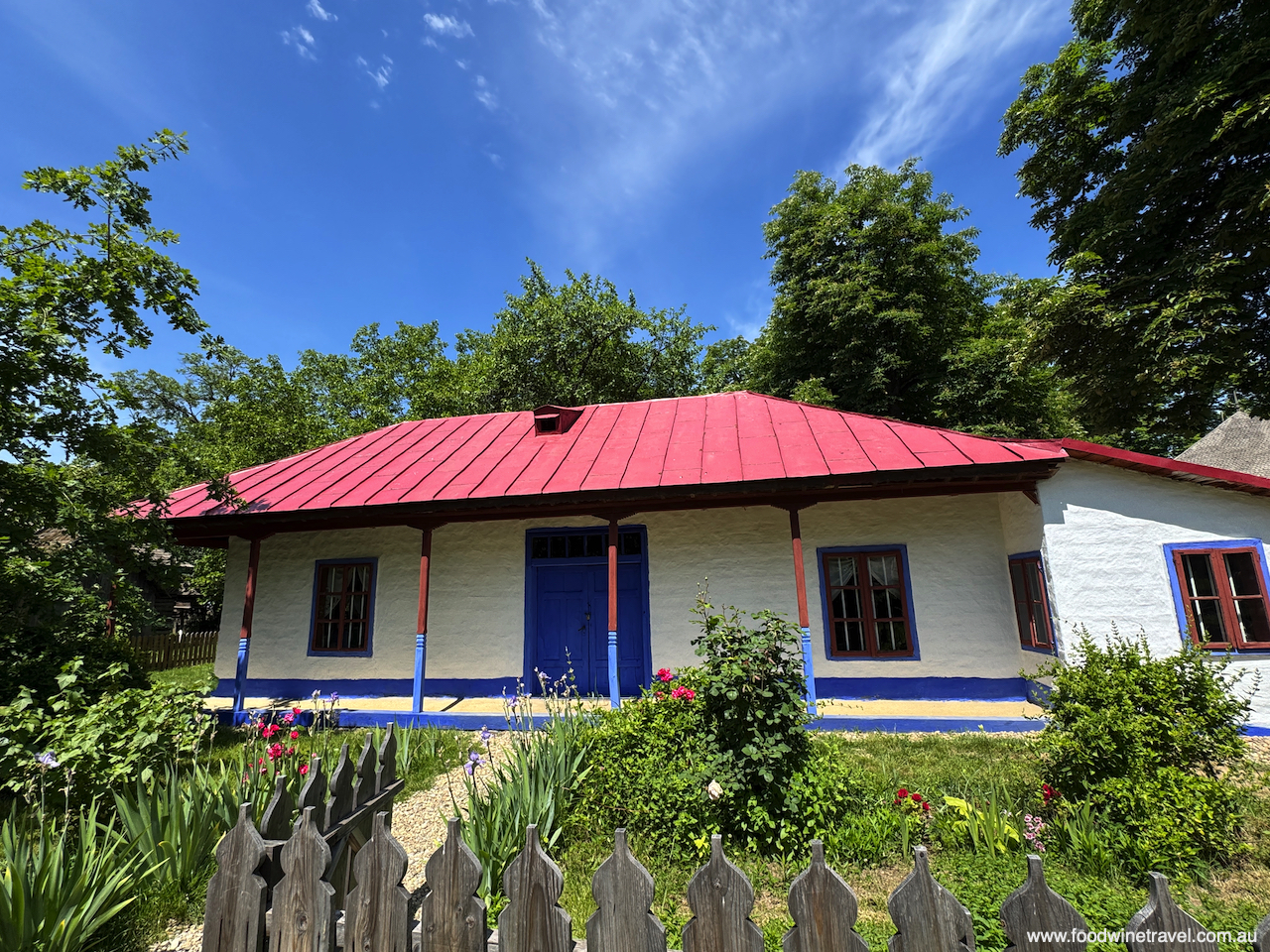
It was a gentle, relaxing start to day 10 as we sailed the Danube-Black Sea Canal towards Constanta, a Romanian city with a long history. A favourite holiday destination of the idle rich in the early 20th century, Constanta still has a relaxed beach-resort vibe, with modern cafés dotted amongst period buildings representing the city’s many layers of history, stretching right back to Greek and Roman times.
The Black Sea at last
Constanta is an incredibly busy port, even more so now that the ongoing conflict in Ukraine is preventing ships from accessing nearby Ukrainian ports. The second biggest port on the Black Sea after Istanbul, the shores of Constanta are lined with cranes and oil tanks and silos, but there was a moment of pure joy as a pod of dolphins frolicked alongside the boat just as we exited the canal and entered the Black Sea.
An afternoon excursion introduced me to Romanian wine at the country’s largest and most esteemed winery. Murfatlar has won numerous international awards, particularly for its Chardonnay, and the five wines offered for tasting are very smart indeed.
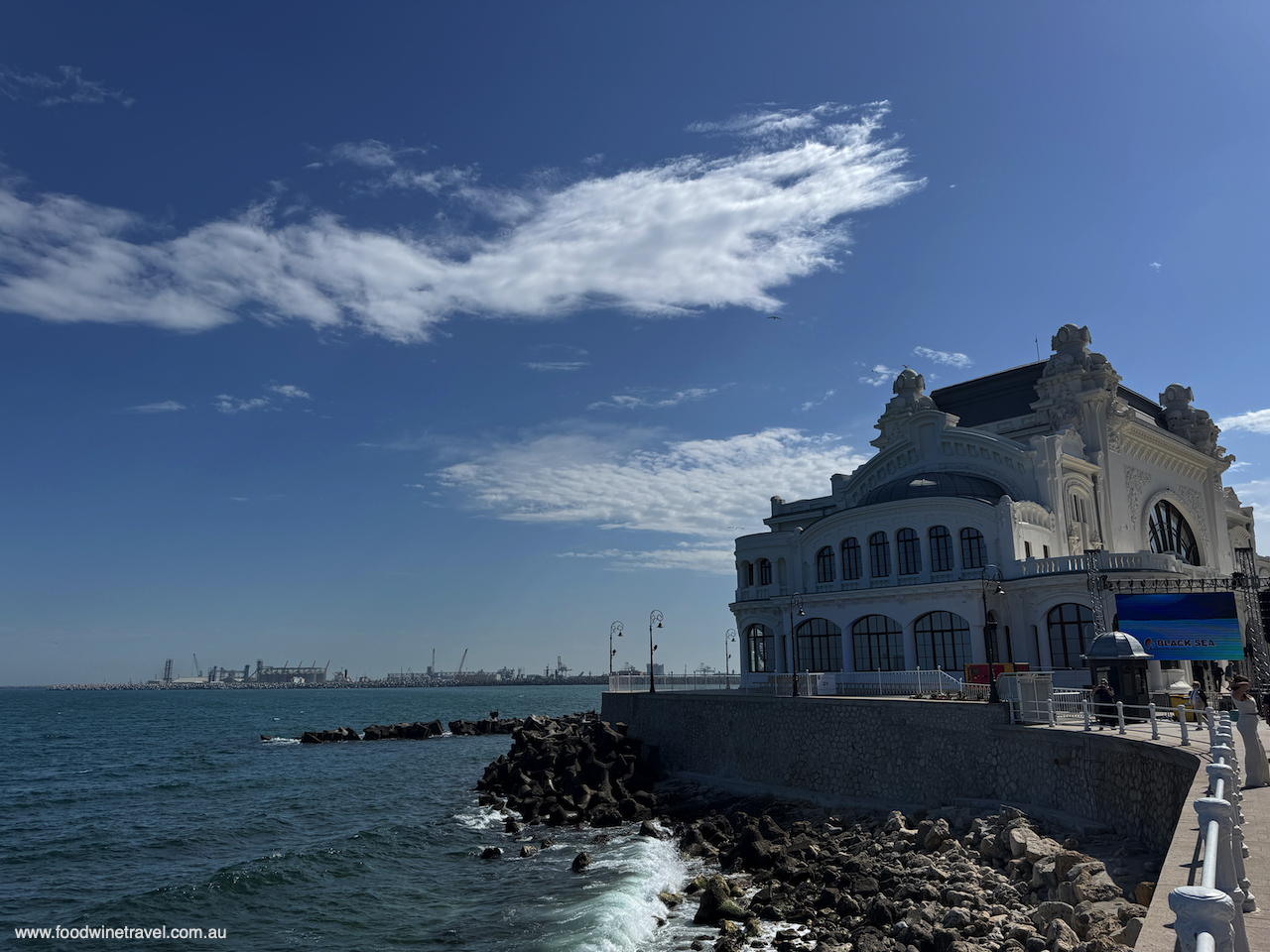
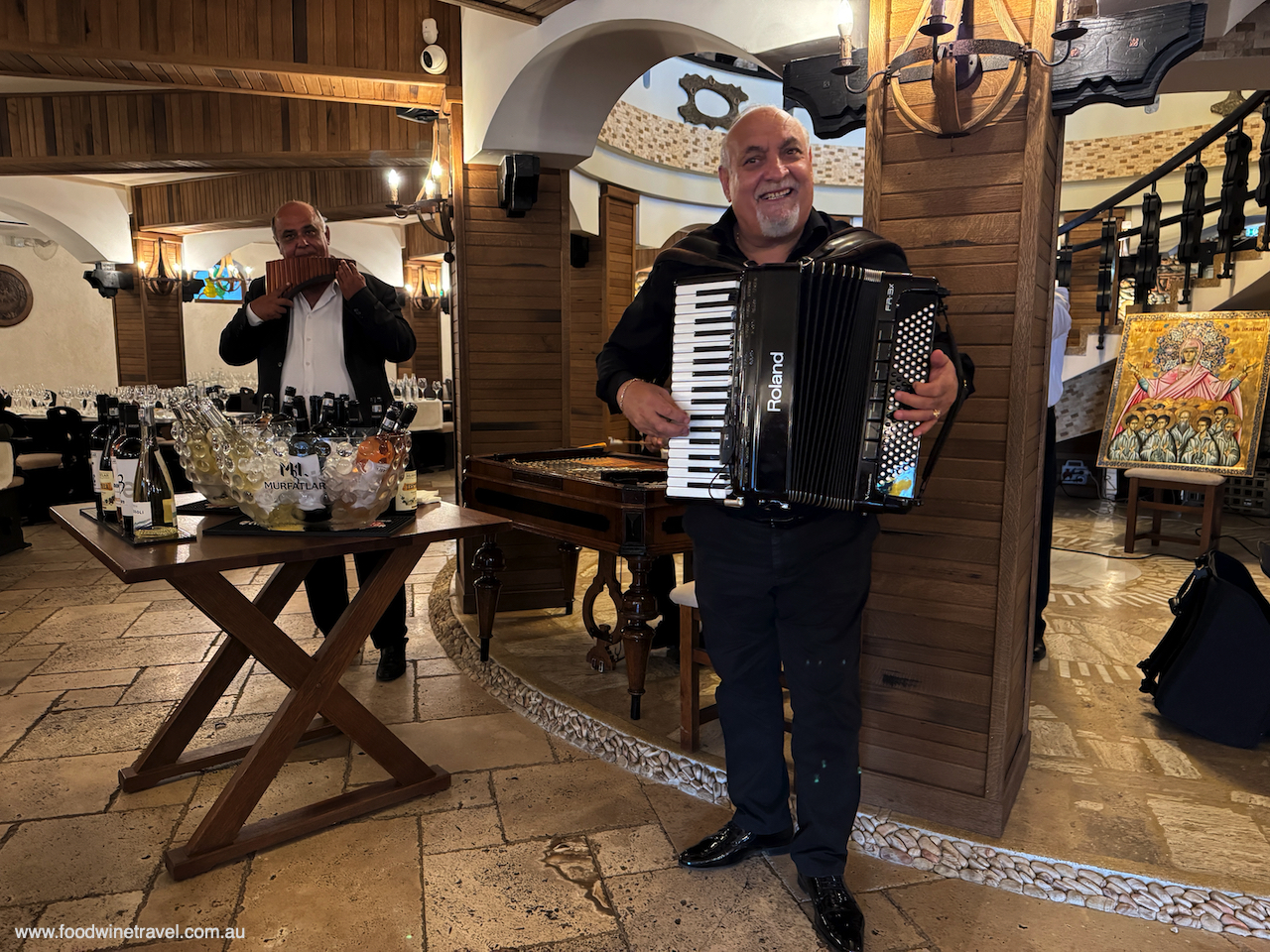
On day 11, as the countdown to our departure began, we sailed back through the Danube-Black Sea Canal. A colossal work with an unsettling history – its initial construction was by political prisoners during the Communist era – the canal was finally completed in 1984, providing a shortcut between Central Europe and the Black Sea.
The ship’s panoramic windows allow for a lovely breeze and we were serenaded by bird song, before the weather turned later in the day. People in fishing boats and on the banks of the canal gave the occasional wave, in a gesture that seemed fitting on this homeward stretch. A gala farewell dinner saw the MS Vivaldi chef turn out his finest meal yet: cauliflower velouté, followed by duck foie gras, and fillet of quail in a port wine sauce. The atmosphere was as warm and festive as the baked Alaska dessert flambéed in Grand Marnier.
Highlights of the Danube River cruise
From the port of Oltenita on the morning of day 12, it was a 1½ hour journey by bus to Bucharest airport, where everyone went their separate ways. The warmth of the crew, led by cruise manager Ana; the well-planned excursions; and the local flavour introduced at every opportunity (through talks, entertainment, and themed dinners) were among the highlights of the cruise.
It would have been easy enough to explore some of the stops independently, but the local insights from knowledgeable guides were valuable. I loved that some of the excursions (in regional Hungary and Bulgaria, for example) took us to places where passengers from our cruise ship were the only visitors.
During the entire journey, we rarely encountered another ship. Given the number of tourists swarming the continent, it’s a joy to experience these less visited places. And while a cruise will only ever be a small taste of what’s on offer, what a fine way it is to be introduced to new places and create new memories.
With thanks to CroisiEurope for hosting me on this very special journey. More information about CroisiEurope’s Danube to the Black Sea cruise can be found here.
